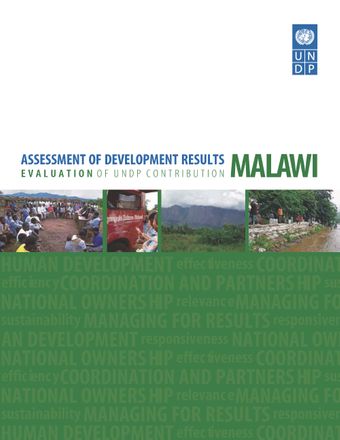Development challenges and national strategies

- Author: United Nations Development Programme
- Main Title: Assessment of Development Results - Malawi , pp 9-16
- Publication Date: December 2011
- DOI: https://doi.org/10.18356/3fdf016b-en
- Language: English
Malawi, with 13 million people, is a small, landlocked, predominantly rural country. Its economy is based primarily on rain-fed agriculture, from which more than 70 percent of the population derive livelihoods. The agricultural sector contributes 35 percent to gross domestic product (GDP) and generates 90 percent of foreign exchange earnings, mainly from export of tobacco. Most of its agricultural production is devoted to meeting the subsistence needs of farming families. Since Malawi achieved independence in 1964, the structure of its economy has not changed significantly. The contribution of the manufacturing sector to GDP has fallen from 12 percent in the 1970s to 8 percent in 2010. Economic growth has been erratic. Growth rates were higher in the 1970s but turned negative in the 1980s and 1990s, before positive growth rates returned beginning around 2000.
-
From This Site
/content/books/9789210547888c006dcterms_title,dcterms_subject,pub_keyword-contentType:Journal -contentType:Contributor -contentType:Concept -contentType:Institution105



